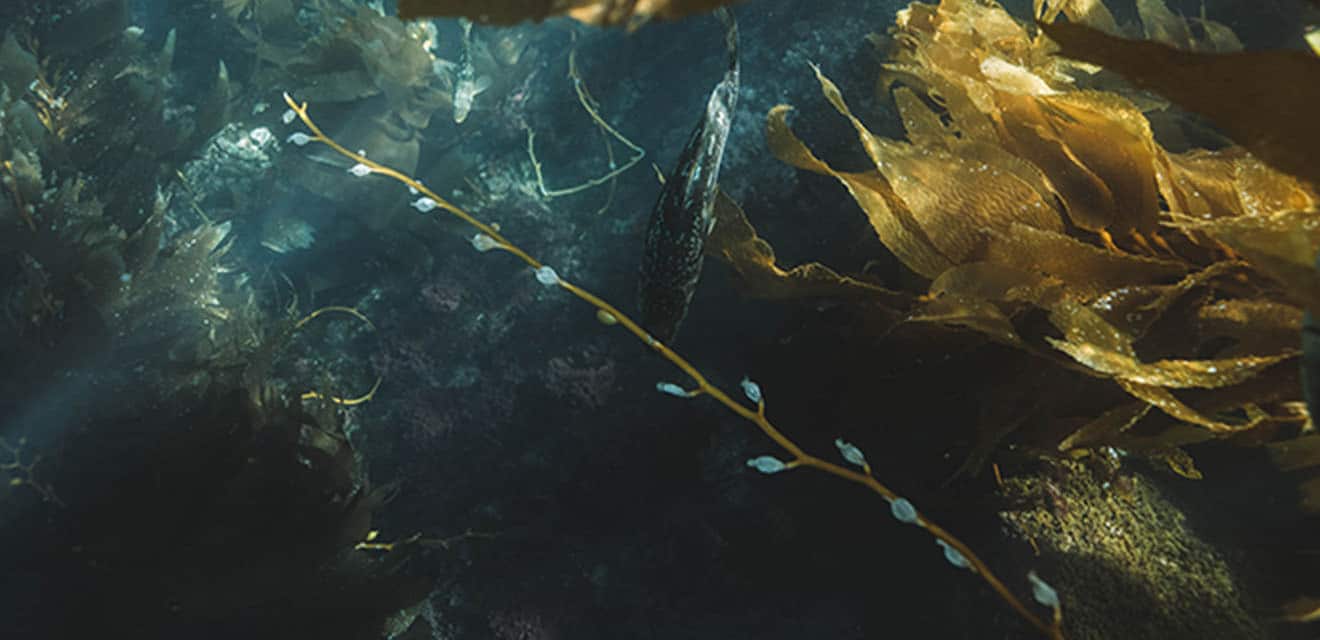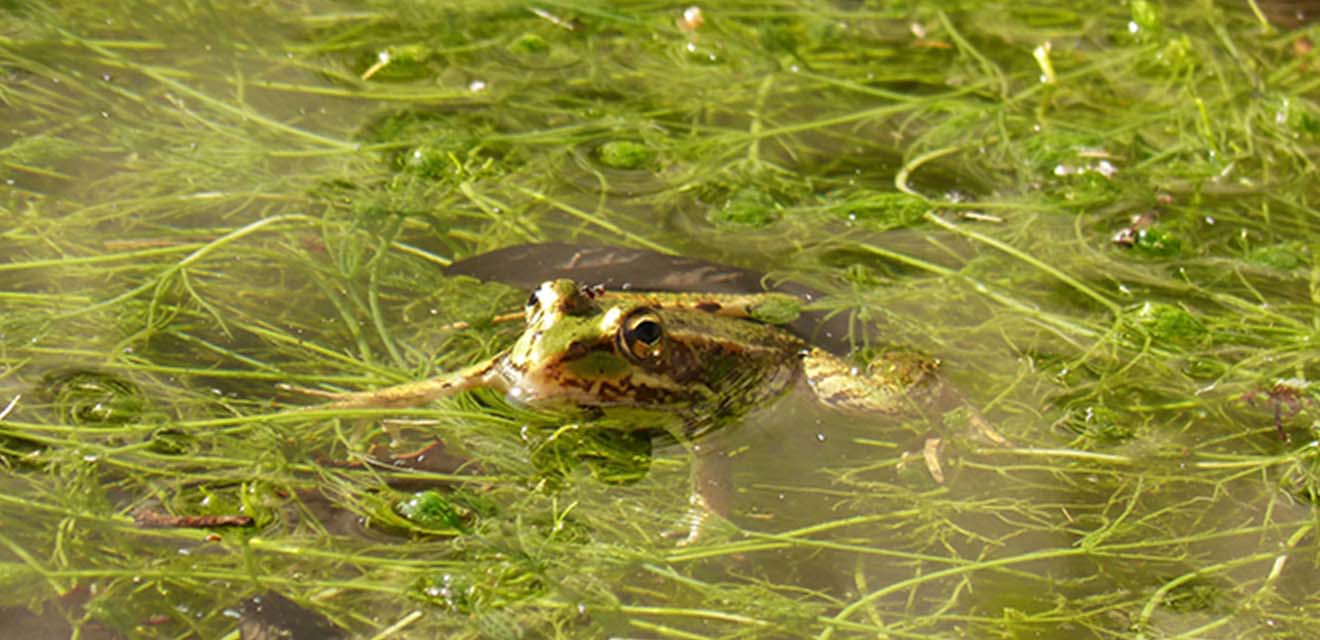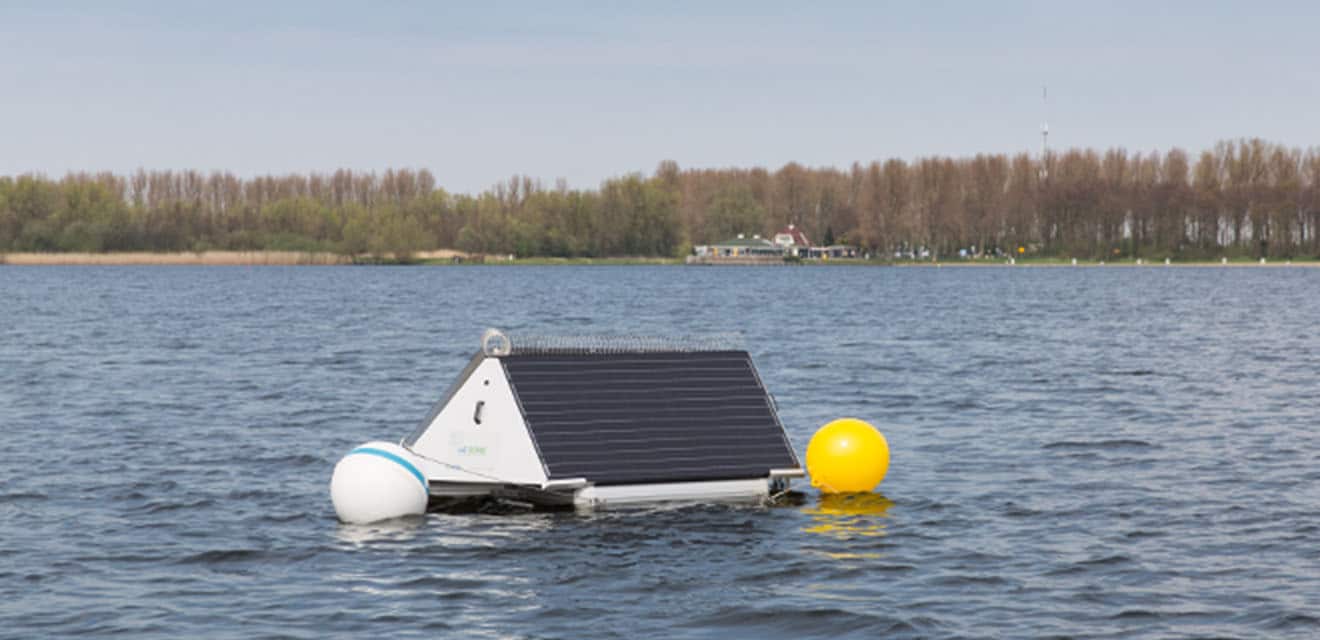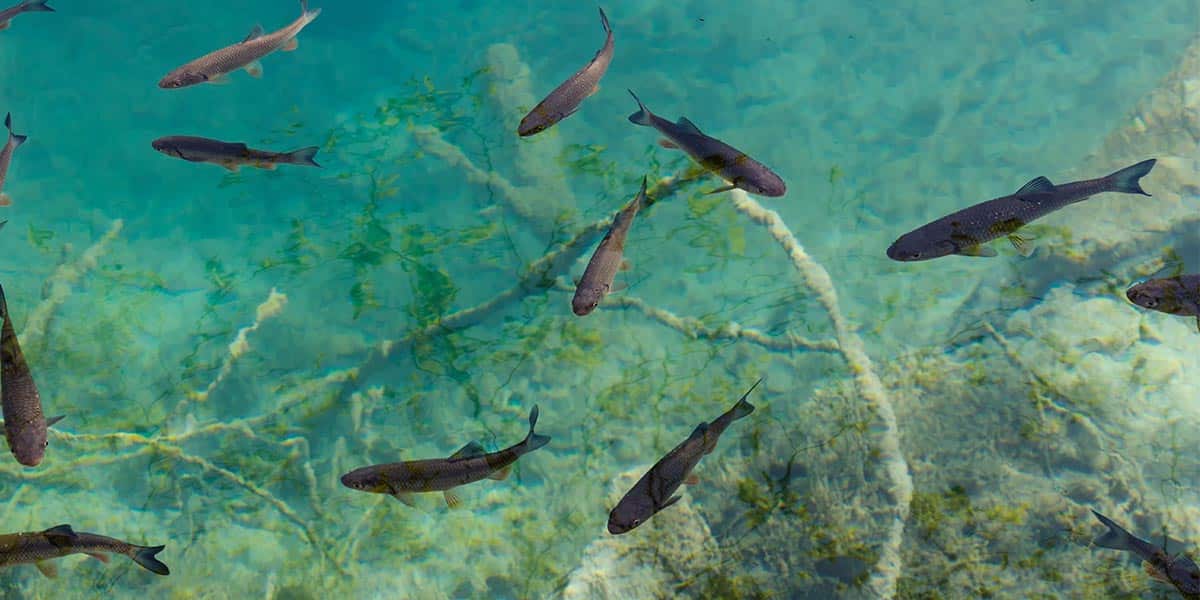In summary
- Aquatic plants perform several essential ecological functions in freshwater habitats and different aquatic environments.
- They are a natural part of all lakes and their surroundings, interacting with a wide range of organisms and groups of aquatic flora and fauna in various forms and levels of the ecosystem.
- When restoring the ecosystem of a lake or pond, it is essential to assess its aquatic vegetation, its role in water balance, and the difficulty that its management may entail.
First, aquatic plants provide food for animals and other aquatic creatures; they also provide habitat for aquatic organisms and protect smaller fish.
These aquatic macrophytes keep sediment at the bottom of a lake, which helps increase water clarity and quality. Most importantly, aquatic vegetation influences oxygen levels within a body of water and absorbs pollutants from contaminated water. When aquatic plants grow, they produce oxygen, which is extremely important for the life and health of a healthy lake ecosystem.
Likewise, bacteria found in the water also depend on oxygen for their development. Therefore, they are essential for the reduction of organic matter in a lake. Consequently, if plants stop growing, dissolved oxygen decreases, bacteria degrade, and organic materials are not reduced.
A common example of an aquatic plant is duckweed, scientifically known as Lemna minor, which is found in various aquatic environments and is essential for natural balance.
The role of algae in aquatic ecosystems
Algae are photoautotrophic cells that contain chlorophyll and have simple reproductive structures. They resemble aquatic plants but lack roots, stems, leaves, and vascular tissue. Like aquatic plants, algae perform photosynthesis to obtain energy, and both need sunlight, moisture, soil, and nutrients such as phosphorus (P) and nitrogen (N) to thrive in different areas of the water body, whether in a pond, aquarium, or garden.

In all bodies of water, basic algae levels are essential to the ecology of a normal lake and important for ecological balance within the water. In this sense, the term “algae” refers to a variety of organisms that generate oxygen through photosynthesis, using carbon dioxide present in the water and substrate. Approximately 70-80% of the oxygen we breathe comes from algae. In addition to producing oxygen, algae feed fish and other aquatic animals, contributing to the balance of flora and fauna on the surface and bottom of the lake. Therefore, algae specimens vary in color and height, adapting to the specific conditions of the aquatic ecosystem.
Environmental problems associated with excess algae
However, in almost all places where fresh water is stored, stagnant, nutrient-rich water causes the inevitable proliferation of algae. There are more than 30,000 species of algae, but we notice their presence when they become a nuisance and negatively impact water quality, recreation, aesthetics, and when they cause unpleasant tastes and odors. The most common categories found in lakes, rivers, and other aquatic habitats are filamentous algae, planktonic algae, and macrophytes, which affect the depth, color, appearance, and health of the aquatic ecosystem for the most part.

Nutrient pollution (excessive N and P) in water bodies encourages excessive growth of aquatic plants and fuels the production of harmful algal blooms (HABs). The richer the water and substrate content in nutrients, the more severe the blooms become. These blooms seriously hinder plant growth, as they block light at the surface of the water body. Consequently, the reduced light available to plants decreases the dissolved oxygen within the water body, affecting the balance and health of the ecosystem and aquatic flora in the rest of the lake, even at depths of more than one meter, a critical point for aquatic life.
Solutions
There are solutions for maintaining algae counts at optimal levels in freshwater ecosystems. Algaecides are the most commonly used method. These chemicals offer quick results; however, they do not solve the problem in the long term, as they require repeated applications to control excessive vegetation and algae growth, affecting water quality and the balance of the aquatic habitat.
In addition, algaecides not only remove excess algae, but also kill aquatic plants, macrophytes, fish, and other organisms vital to the lake ecosystem. As a result, they degrade water quality, which becomes unstable due to low levels of dissolved oxygen. Likewise, the lowest water layer (hypolimnion) in a stratified lake can become anoxic (lacking oxygen). As a result, aerobic microbial digestion of nutrients in the deeper water layers is impaired, disrupting microorganisms and natural substrate processes. Therefore, herbicides and algaecides represent an unsustainable short-term solution to a long-term problem affecting changes in aquatic habitats.
The optimal solution against unwanted algae proliferation requires better policy control for nutrient loading in water. However, this long-term measure depends on regulations that typically take years to implement, and even longer to show visible improvements in ecosystem health and water quality.
Sustainable Water Management
Therefore, water treatment managers in freshwater ecosystems employ long-term sustainable methods to maintain water quality in lakes and ponds with aquatic plants. One such approach is ultrasonic treatment, which uses ultrasound waves to block algae’s access to sunlight and essential nutrients in the water. Without sunlight to support the photosynthesis process, algae fall to the bottom of the lake, where they die naturally without releasing harmful toxins or affecting aquatic life, including other aquatic plants and organisms such as invertebrates and fish. In this process, other aquatic plants and organisms are not harmed.

Within a freshwater body, physicochemical parameters such as pH, temperature, water flow, depth, lighting, and the presence of microorganisms can differ depending on the ecosystem. Therefore, algae species vary or even change during the season. For ultrasonic treatment to work effectively, it is important to use specific ultrasonic frequencies depending on the type of algae, water characteristics, depth, lighting, nutrient content, and the needs of the aquatic ecosystem.
Ecosystem restoration
Algae growth reduces the clarity of freshwater and negatively affects the quality of the aquatic ecosystem, inhibiting the growth of aquatic plants and decreasing dissolved oxygen levels. As a result, fish die and aerobic bacteria decline. As competition is reduced, nutrient levels in the water increase, leading to a decline in water quality and the blooming of harmful algae.
In this sense, ultrasound restores damaged aquatic ecosystems; it reduces algae counts by 90%, leaving enough algae to maintain a healthy water ecosystem. This improves water clarity, encourages the growth of aquatic plants, and increases dissolved oxygen, aerobic bacteria, and fish populations, improving the balance in these natural spaces.
